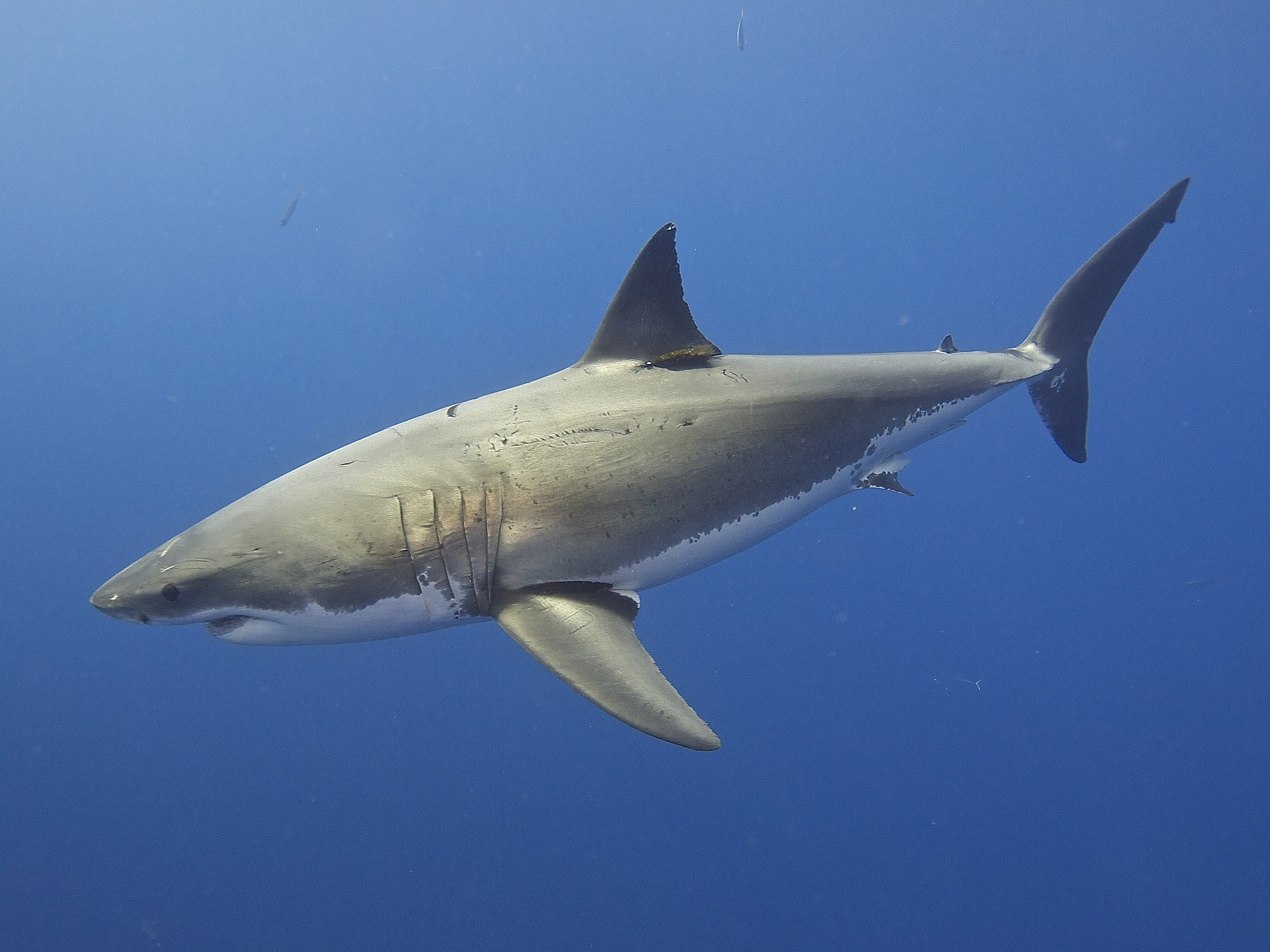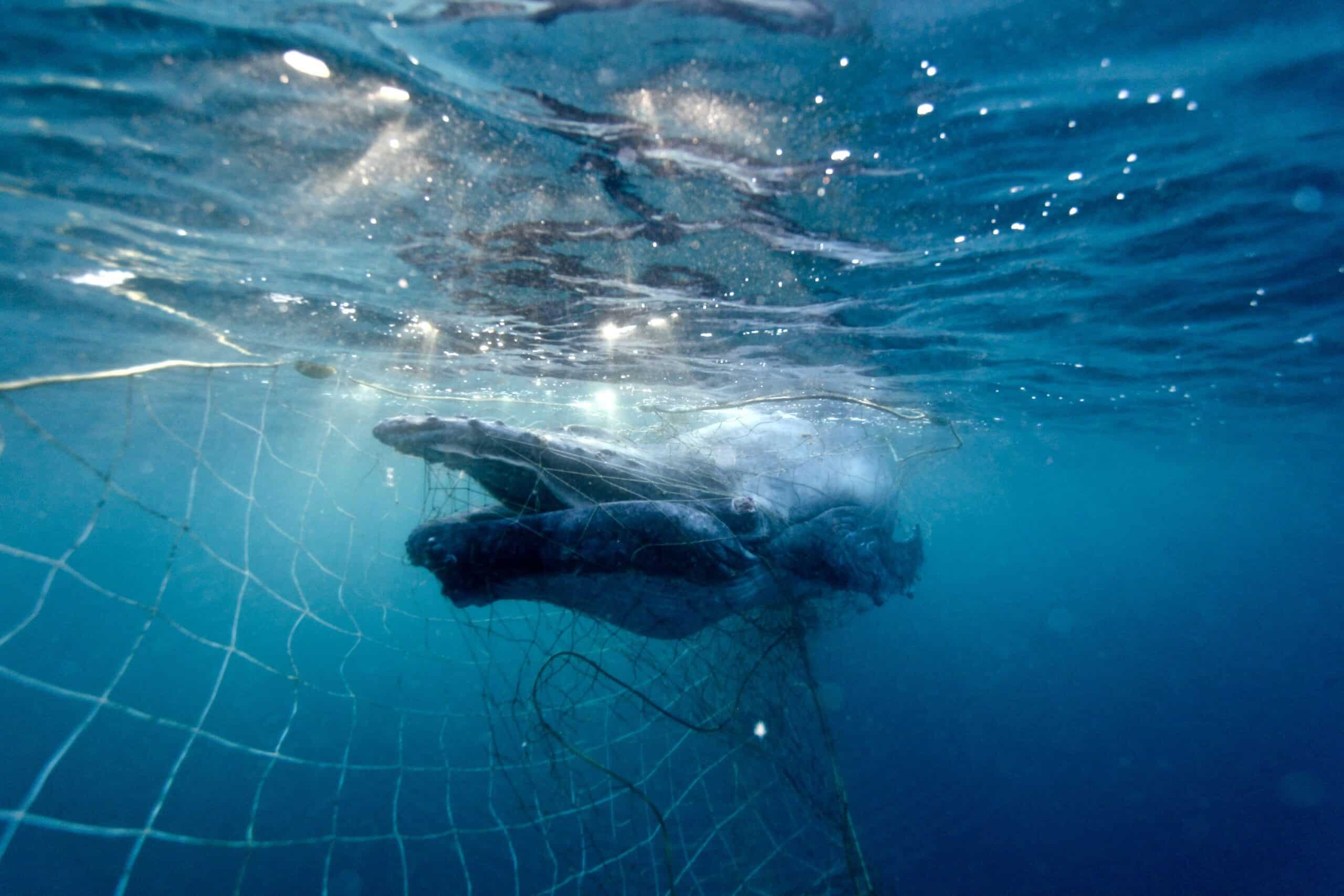Research shows that Australia’s great white sharks are highly related to each other and may consist of fewer than 500 breeding animals. SYDNEY, 24 June 2025: Latest research has found Australia’s great white shark population is much smaller than expected, increasing their vulnerability to further population threats. The population...
by Paula Boer
The main aim when rescuing wildlife is to return the animal to the wild, healthy and with the skills to cope. Orphaned wombats (joeys) that are hand raised on bottled milk need to learn to dig burrows, burrow etiquette when encountering other wombats, and many other coping strategies that their mothers would normally teach them.
When a young wombat is ready to be separated from its mother in the wild, it is actually the mother who leaves, allowing the youngster to remain in its home burrow while becoming accustomed to being alone. Wildlife rescuers obviously don’t have this option, so we do the best we can, raising wombats with a buddy of a similar size (weight is more important than age or gender).
When the wombats reach between 10 – 15 kgs, they are weaned from the bottle, though by this time they are accustomed to eating grass and other vegetable matter. They love chomping on roots, bark, even stones, all of which helps give them extra nutrients and keeps their teeth short (their teeth grow continuously). At this stage, they can be released into a small enclosure with one or two burrows. They are fed daily, and still love their cuddles. The enclosure has solid metal walls which are dug 1 metre into the ground to prevent them from digging (or clmbing!) out.
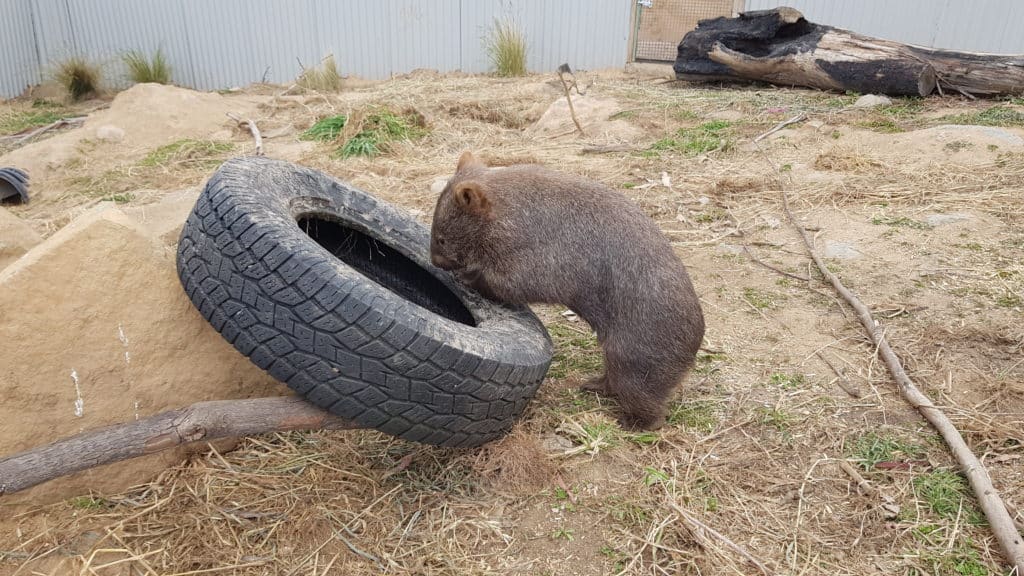
When they reach approximately 20kgs, they are ready to leave their human carers. To help acclimatise them to the wild, they are given access to a much larger and natural area (the mingle enclosure) with only a mesh fence. This enables them to see and smell the local resident wild wombats. At this point all human contact ceases, though they are checked daily, their water refreshed and so on.
When moved into a new area, the first thing a wombat does is to check the perimeter. Bill, the eldest and heaviest of the four wombats at Docsden at the moment, is particularly determined and likes to check the integrity of his compound by digging, climbing, chewing and even throwing himself at objects.
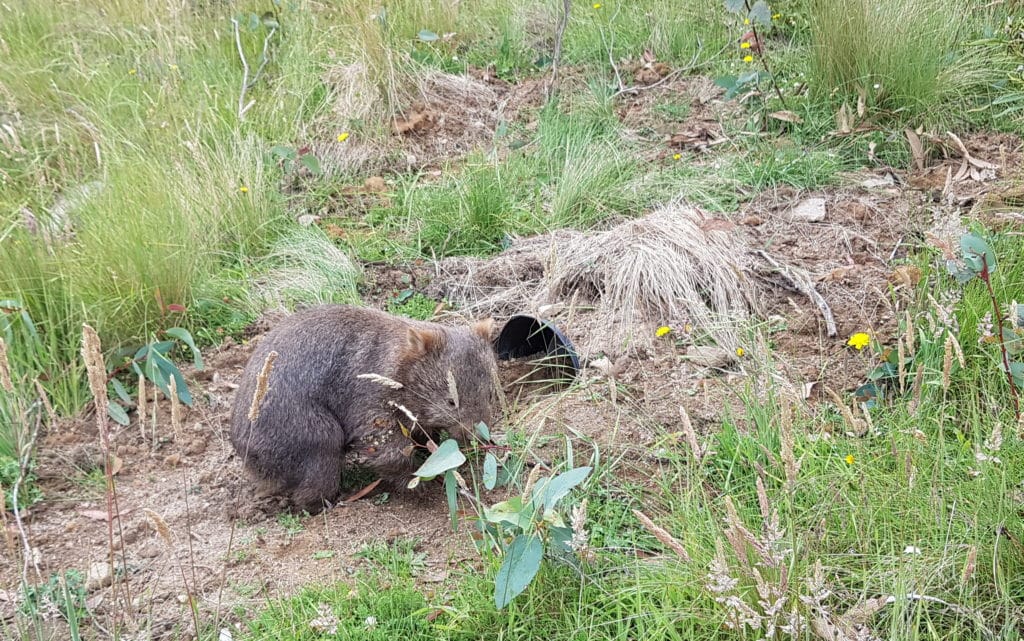
Last weekend, the gates from the small enclosures to the mingle enclosure were opened. Bill was the first out, and very soon checked the entire fenceline and all three new burrows. One was obviously not to his liking though, as he did major renovations overnight.
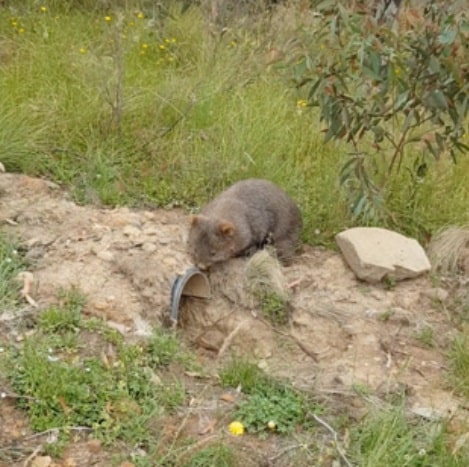
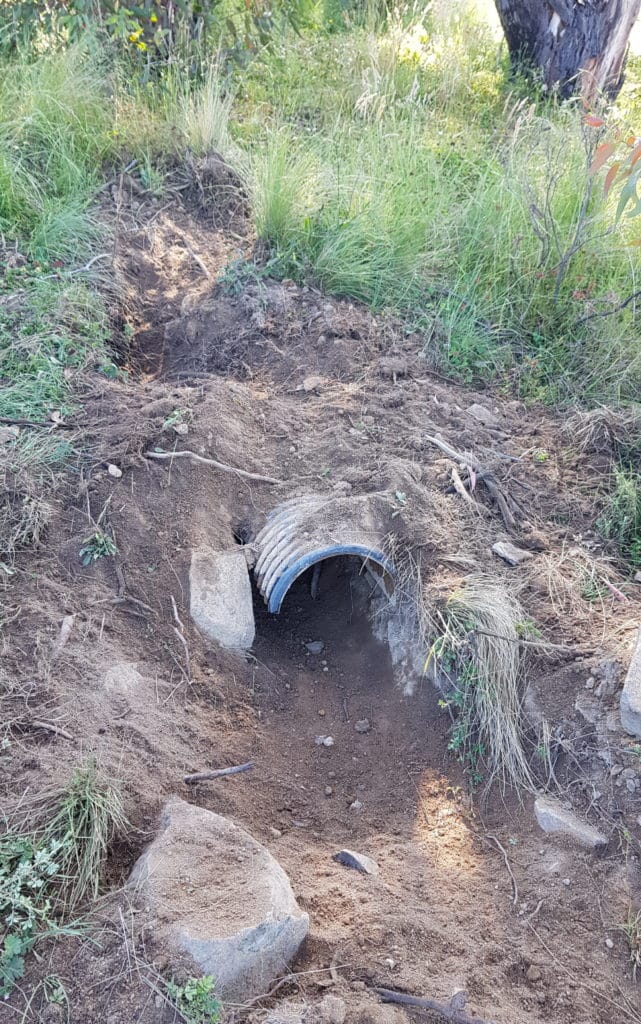
With sensor-triggered day/night cameras in the enclosure, we were able to see when Rossco, Buddy and Maddy emerged to explore too. These three stayed together, rushing back to the smaller enclosure every so often. All four wombats still sleep together in their original burrow, but this will change. Once they are fully released into the wild, they will go their separate ways.
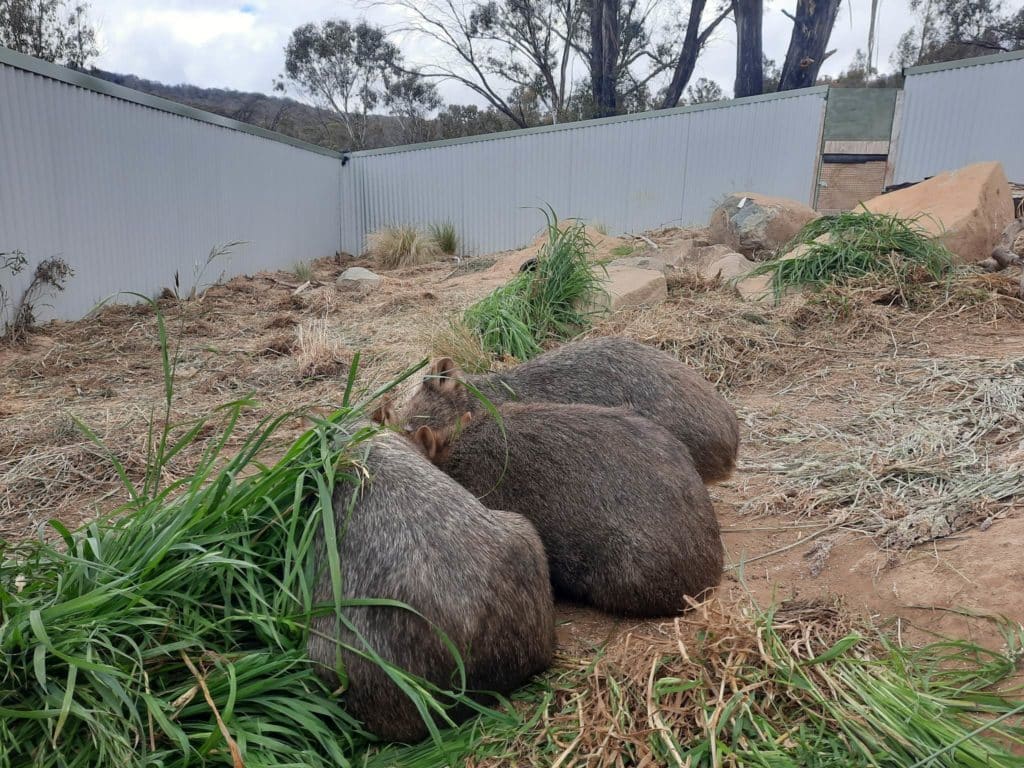
Huge thanks to the Humane Society International for their grant which built the enclosures, and to the amazing volunteers of Snowy Mountains Wildlife Rescue (LAOKO) for their care in rescuing, raising, and caring and for these wonderful Australian creatures.
Originally published at https://paulaboer.com/2023/01/09/mingling-wombats/

